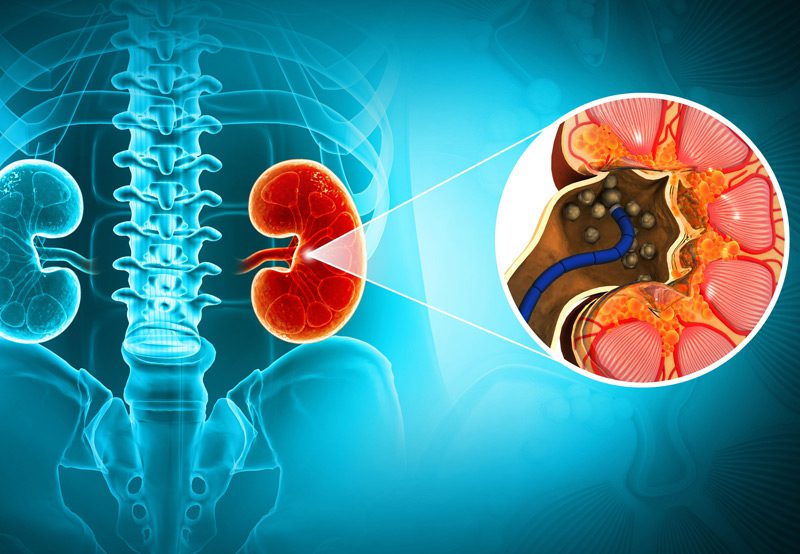

Robotic pyelolithotomy is a minimally invasive surgical procedure used to remove large or complex kidney stones that cannot be effectively treated through other standard techniques, such as extracorporeal shock wave lithotripsy (ESWL) or ureteroscopy. This approach is particularly beneficial when stones are located within the renal pelvis or are associated with anatomical abnormalities that complicate endoscopic access.
Causes of Kidney Stones
Kidney stones form when minerals and salts in the urine crystallize and aggregate. Contributing factors include:
- Dehydration: Concentrated urine increases stone-forming substances
- Diet: High intake of oxalates, sodium, or animal protein
- Metabolic Disorders: Such as hyperparathyroidism or renal tubular acidosis
- Urinary Tract Obstruction: Impaired urine flow can promote stone formation
- Anatomical Anomalies: Like horseshoe kidney or ureteropelvic junction (UPJ) obstruction

Diagnosis
The evaluation for kidney stones includes:
- Non-contrast CT Scan: Gold standard for detecting stones and determining size/location
- Ultrasound: Useful for initial assessment, especially in patients avoiding radiation
- Urinalysis and Blood Work: Assess for infection, kidney function, and metabolic abnormalities
- Intravenous Pyelogram (IVP): May be used to visualize urinary tract anatomy and obstruction
Robotic pyelolithotomy is typically recommended for patients with large stones in the renal pelvis, staghorn calculi, or those with concurrent anatomic defects requiring surgical correction.
Treatment Options
- Robotic Access: Small incisions are made to insert robotic instruments and a camera
- Renal Pelvis Exposure: The renal pelvis is carefully opened to directly access the stone
- Stone Removal: Stones are extracted intact or fragmented for removal
- Pelvis Repair: The renal pelvis is closed after complete stone removal, often with stent placement to aid healing
This approach allows precise manipulation and excellent visualization while minimizing tissue trauma.
Next Steps
Patients typically experience shorter hospital stays, less postoperative pain, and faster recovery compared to open surgery. A ureteral stent is often left in place temporarily to facilitate urine flow while the surgical site heals. Follow-up imaging and metabolic evaluation help ensure complete stone clearance and guide long-term prevention strategies. Robotic pyelolithotomy provides an effective, minimally invasive solution for patients with complex or inaccessible kidney stones that require direct surgical management.
